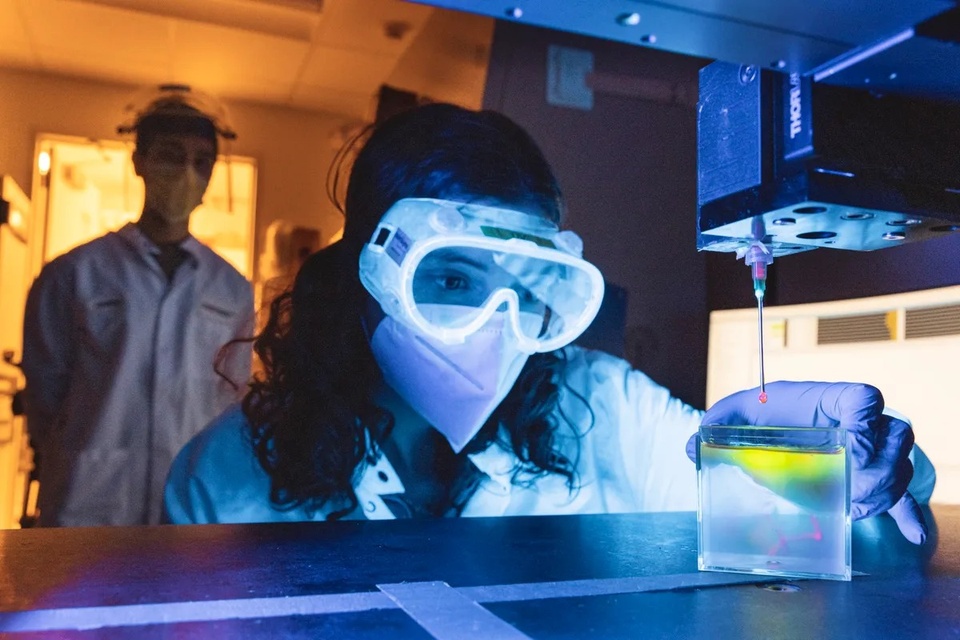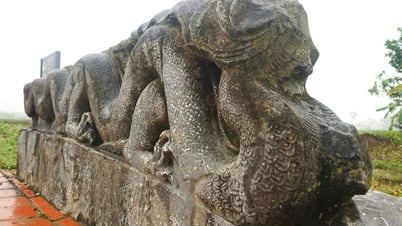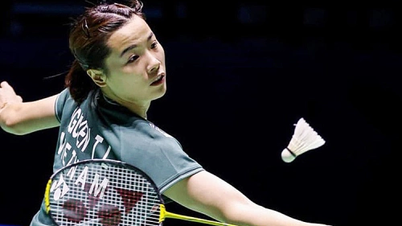Gadget Technology
- Wednesday, May 3, 2023 07:06 (GMT+7)
- 07:06 5/3/2023
Stanford scientists have 3D printed heart tissue, a technique that could one day help print heart valves and even a complete heart.
 |
Bioprinting in a lab at Stanford University uses living cells to create organ-like structures. Photo: Stanford University . |
3D printers are changing the way we make cars, houses, and even food. Now, the technology could change organ transplants.
Mark Skylar-Scott and his team of bioengineers at Stanford University have developed a technique for 3D printing living heart tissue. They say the technique could one day be capable of printing vital heart parts, such as valves and ventricles, for transplant into patients who need heart replacements.
Cardiovascular disease is the leading cause of death worldwide, killing nearly 18 million people each year, according to the World Health Organization. Patients can receive transplants, but the transplanted organs can be rejected by the body within 20 or 30 years.
3D bioprinting is a technique to create a new organ, using the patient's own cells, thus limiting rejection, a condition in which the body's immune system attacks foreign organs.
"That's the ultimate goal, but a lot of the fundamental building blocks for this 3D bioprinting technique are already in place," Skylar-Scott told CNET .
3D bioprinting “assembles” living cells to create organ-like structures. This isn’t a new technique, but it’s been relatively slow so far, as each cell has to be printed one at a time. Even printing 1,000 cells per second, it would take more than a thousand years to create a human heart.
 |
Artificial blood vessels are inserted into tissue after the bioprinting process. Photo: Stanford University . |
Skylar-Scott's team found a way to speed up the process by printing clusters of thousands of cells called organoids, rather than individual cells. "We take millions of organoids and concentrate them, then shape them through the printer," the bioengineer said.
Once printed, the cell clusters took on the shape of heart tissue, and the researchers then printed a network of “blood vessels” inside them. The “blood vessels” placed inside were actually tube-like structures similar to human veins that could pump fluid themselves.
The next step would be to print a larger structure, such as a functional part of the heart, to implant into a real heart.
Skylar-Scott says that within the next five years, 3D bioprinting could create a heart valve for transplant, and within at least two decades, a complete heart could be created.
Pioneering Scientists
"Pioneers of Science" is an interesting book about the history of famous inventions. To make great contributions to humanity, famous scientists worked with passion and a spirit of constant learning.
Hoang Nam
3d printed heart organ transplant
You may be interested in
Source link


![[Photo] Prime Minister Pham Minh Chinh receives Rabbi Yoav Ben Tzur, Israeli Minister of Labor](https://vphoto.vietnam.vn/thumb/1200x675/vietnam/resource/IMAGE/2025/5/21/511bf6664512413ca5a275cbf3fb2f65)


![[Photo] Determining the pairs in the team semi-finals of the National Table Tennis Championship of Nhan Dan Newspaper](https://vphoto.vietnam.vn/thumb/1200x675/vietnam/resource/IMAGE/2025/5/21/eacbf7ae6a59497e9ae5da8e63d227bf)
![[Photo] Prime Minister Pham Minh Chinh receives the President of Asia-Pacific region of PowerChina Group](https://vphoto.vietnam.vn/thumb/1200x675/vietnam/resource/IMAGE/2025/5/21/0f4f3c2f997b4fdaa44b60aaac103d91)
![[Photo] Scientific workshop "Building a socialist model associated with socialist people in Hai Phong city in the period of 2025-2030 and the following years"](https://vphoto.vietnam.vn/thumb/1200x675/vietnam/resource/IMAGE/2025/5/21/5098e06c813243b1bf5670f9dc20ad0a)





















































































Comment (0)